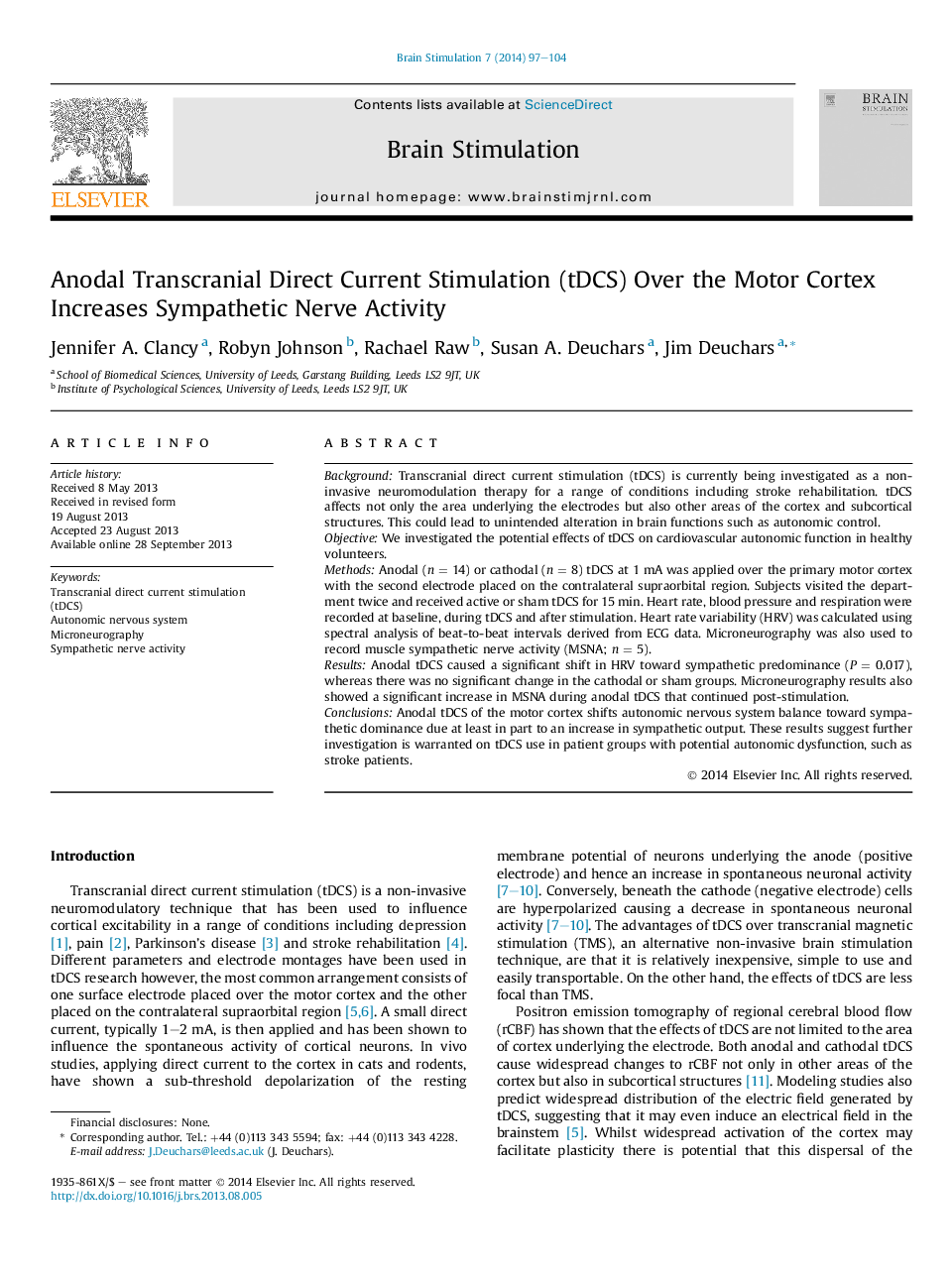| Article ID | Journal | Published Year | Pages | File Type |
|---|---|---|---|---|
| 6006261 | Brain Stimulation | 2014 | 8 Pages |
BackgroundTranscranial direct current stimulation (tDCS) is currently being investigated as a non-invasive neuromodulation therapy for a range of conditions including stroke rehabilitation. tDCS affects not only the area underlying the electrodes but also other areas of the cortex and subcortical structures. This could lead to unintended alteration in brain functions such as autonomic control.ObjectiveWe investigated the potential effects of tDCS on cardiovascular autonomic function in healthy volunteers.MethodsAnodal (n = 14) or cathodal (n = 8) tDCS at 1 mA was applied over the primary motor cortex with the second electrode placed on the contralateral supraorbital region. Subjects visited the department twice and received active or sham tDCS for 15 min. Heart rate, blood pressure and respiration were recorded at baseline, during tDCS and after stimulation. Heart rate variability (HRV) was calculated using spectral analysis of beat-to-beat intervals derived from ECG data. Microneurography was also used to record muscle sympathetic nerve activity (MSNA; n = 5).ResultsAnodal tDCS caused a significant shift in HRV toward sympathetic predominance (P = 0.017), whereas there was no significant change in the cathodal or sham groups. Microneurography results also showed a significant increase in MSNA during anodal tDCS that continued post-stimulation.ConclusionsAnodal tDCS of the motor cortex shifts autonomic nervous system balance toward sympathetic dominance due at least in part to an increase in sympathetic output. These results suggest further investigation is warranted on tDCS use in patient groups with potential autonomic dysfunction, such as stroke patients.
